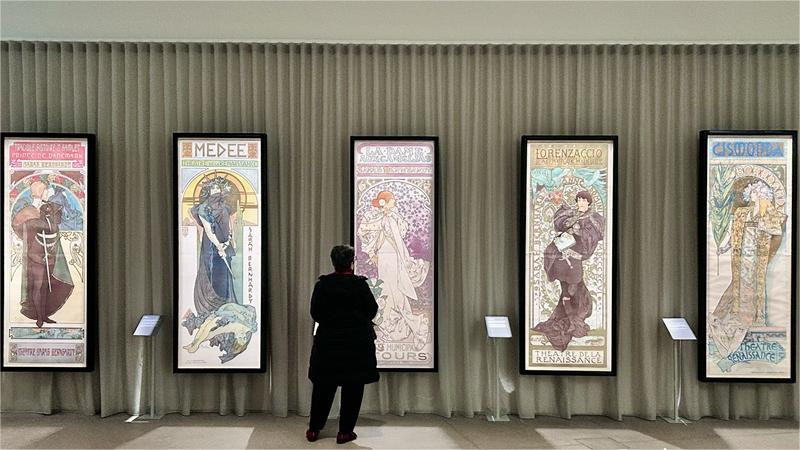Indonesia, Chinese firms combine to drive EV growth
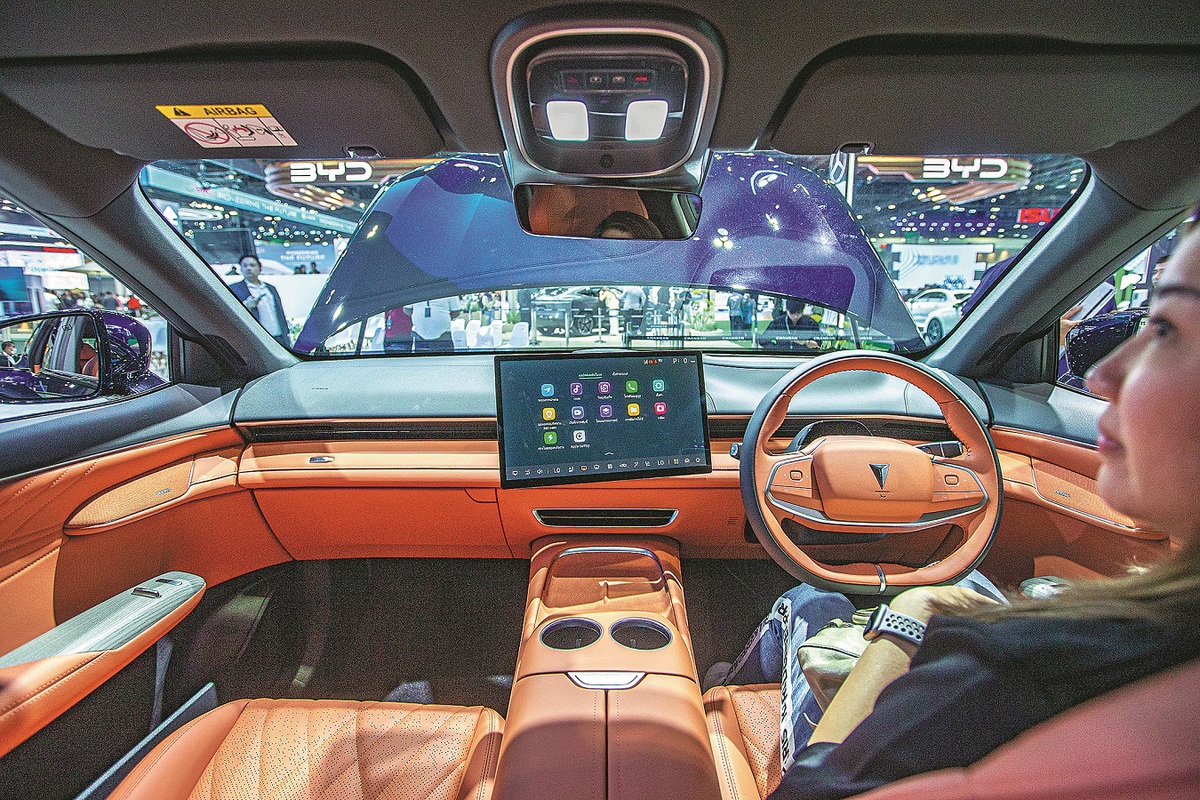
A visitor experiences a Changan DEEPAL S7 during the 45th Bangkok International Motor Show in Bangkok, Thailand, on March 27. (WANG TENG/XINHUA)
After driving his Wuling Binguo electric vehicle for about half a year, Luthfi, a resident of Jakarta, Indonesia, found the experience of using his first EV to be "pretty good".
"The (EV charging) is cheap …and the car is quite small so I can move on the road easily," said the 45-year-old, who goes by one name.
One of the first buyers of a Wuling Binguo, a compact electric car launched in Indonesia in December, Luthfi said he chose it because the manufacturer, SAIC-GM-Wuling, has been in Indonesia for seven years, and the vehicles are made locally.
SGMW is a joint venture between Shanghai-based SAIC Motor, United States-based General Motors and Liuzhou Wuling Motor. It is based in Liuzhou, in South China's Guangxi Zhuang autonomous region.
The joint venture's plant in Indonesia, the first of its kind outside China, started production in 2017. It has invested a total of $1 billion to build the manufacturing base, which includes a factory with an annual production capacity of 120,000 units and a parts and components park.
While Japanese cars are a familiar sight on the busy roads of Indonesia's capital Jakarta, Jefri Setiawan is seeing more Chinese vehicles as he drives to work every morning.
The 40-year-old mid-level manager is the proud owner of Wuling BinguoEV. He bought the car three months ago after visiting a motor show at the Jakarta International Expo.
He decided to buy the model as it is more affordable than higher-priced brands such as Chery, Neta and BYD — the latest Chinese EVs to enter the Indonesian market — and similar vehicles from Japan, South Korea, the United States and the United Kingdom.
Wuling and other Chinese brands also attracted a lot of interest at the Gaikindo Indonesia International Auto Show, which ran from July 18 to 28 in Jakarta. The event — the largest auto show in Indonesia and one of the biggest in Southeast Asia — was organized by the Association of Indonesian Automotive Industries.
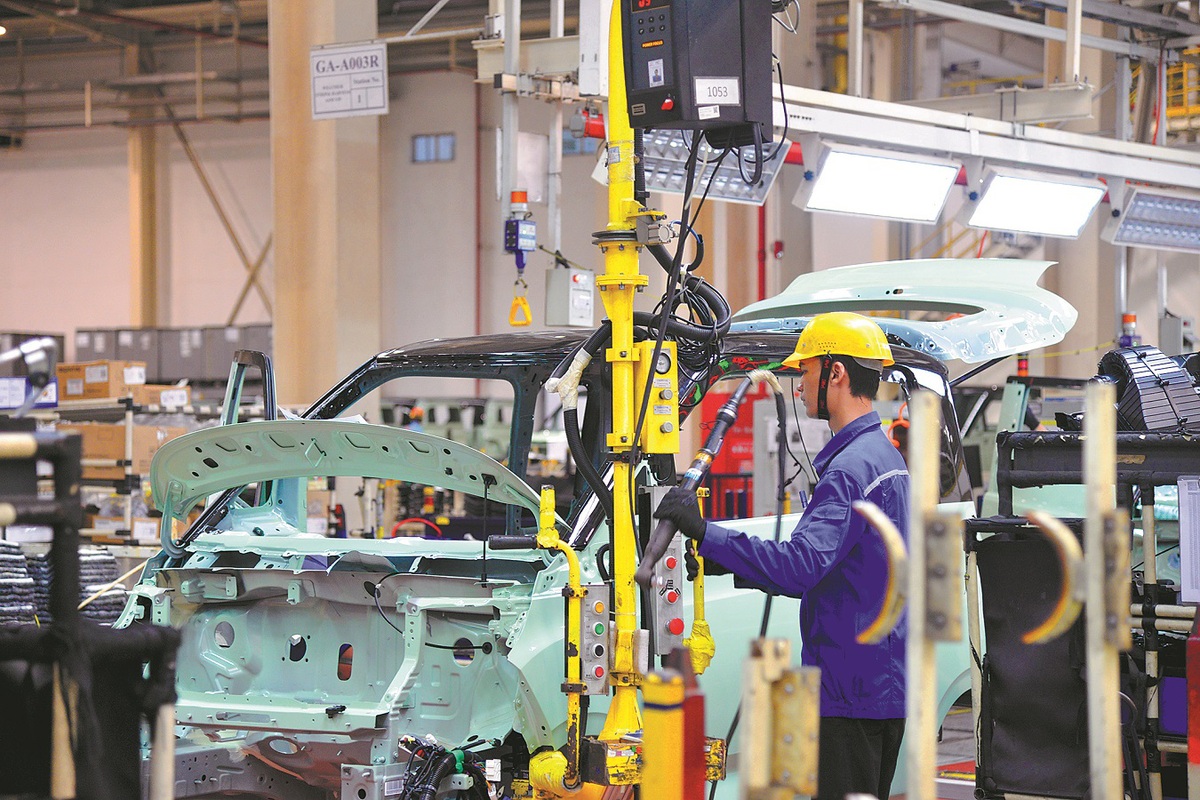
An employee works on an assembly line of Wuling Motors Indonesia in Bekasi, Indonesia, on Feb 24. (WANG TENG/XINHUA)
Growing appeal
Since 2017, over 150,000 vehicles from Wuling have been sold in Indonesia, said Wang Weisen, deputy general manager of SGMW Motor Indonesia, or Wuling Motors.
The Wuling BinguoEV is the second EV model Wuling introduced in Indonesia, following the Airev, which was launched in 2022.
In 2023, Airev and BinguoEV sold more than 10,000 units, making them the two bestselling new EVs in Indonesia and securing the company the top spot in the market, with a 50 percent share. In May, Wuling's latest model, the CloudEV, which has a more spacious cabin, was launched to meet the different needs of drivers.
"Between January and June 2024, Wuling accounted for 68.4 percent of the new energy vehicle market in Indonesia," Wang said.
Rubby Lie, branch head of Prima Wahana Auto Mobil, Wuling's largest authorized dealership in Indonesia, attributed the popularity of Chinese cars to raising awareness about the need to reduce carbon emissions to combat climate change.
A 2023 survey by consulting firm PwC estimated that Indonesia's EV market will exceed $20 billion by 2030 due to consumer awareness of eco-friendly vehicles and government incentives.
"Electric cars will continue to enter Indonesia. Using them is now becoming a trend in Indonesia," Lie told China Daily. He said the presence of China's BYD and other renowned brands in Indonesia is attracting more local buyers.
In May, Indonesian Transportation Minister Budi Karya Sumadi said the number of EVs in Indonesia had reached 33,225 units. The figure was nearly four times the 7,923 EV vehicles sold between January and November 2022, according to the industries association.
Lie said favorable government policies, such as extending fiscal incentives and easing the deadline for manufacturers to fulfill a 40 percent quota of local components for EVs, had encouraged more automakers to build plants in the country.
"Since last year, an increasing number of Chinese EV brands have entered the Indonesian market, which not only provides local consumers with more options, but also supports the development of Indonesia's EV industry," said Garinzafira Shabrina, analysis supervisor of SGMW Motor Indonesia.
Shabrina, who joined Wuling in 2018, said she was a bit nervous at first, as she did not know much about the working style of Chinese companies.
"Now I feel very proud about working at Wuling," said Shabrina, noting the company has more than 130,000 Indonesian customers, and a sales service network of 150 partners.
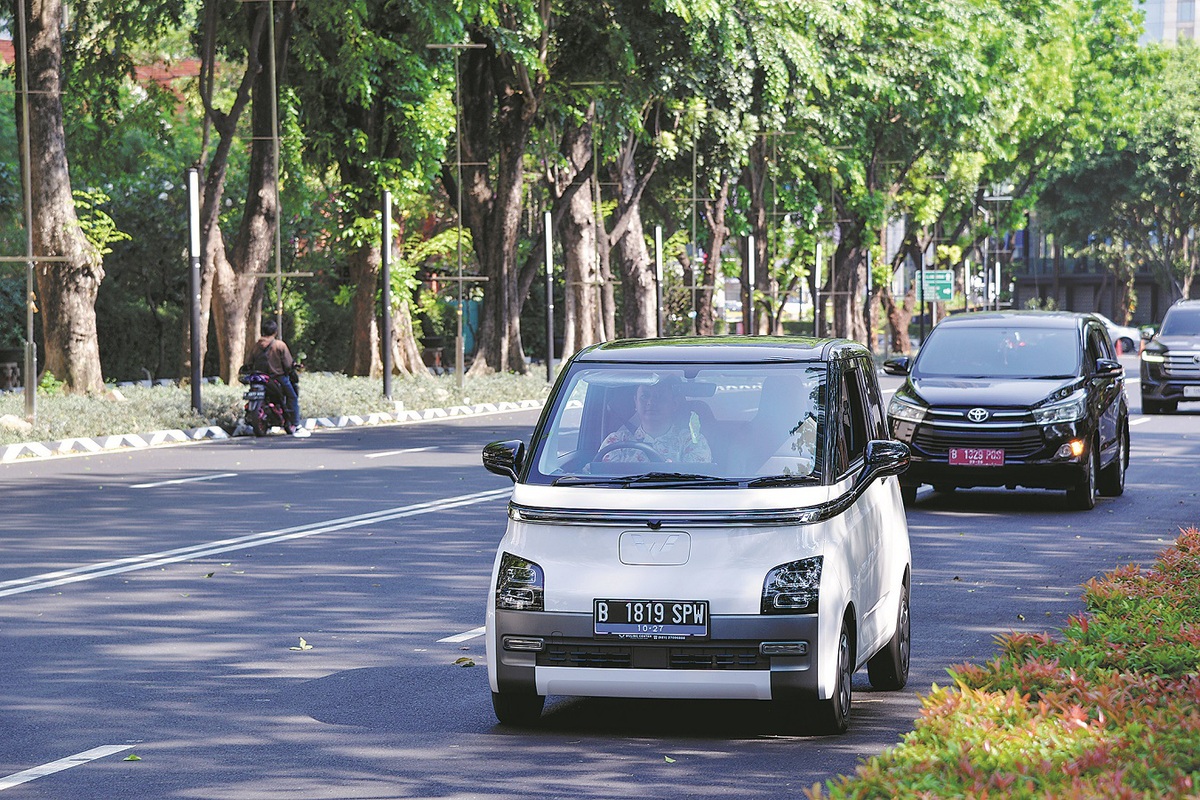
A Wuling Airev is seen on a street in Jakarta on Sept 29. (XU QIN/XINHUA)
Investment incentives
Arnold, who only shared his given name, has worked at a sales center of a Chinese EV brand in Indonesia for almost a year. Before joining the company, he worked for South Korean carmaker Hyundai.
"I joined the Chinese EV company because I saw more people in Indonesia are buying EVs and the government has provided incentives," said Arnold, adding this will create better work opportunities for him.
The Indonesian government has encouraged stakeholders to accelerate the development of the ecosystem for EVs to boost their investments.
In June, Indonesia's Ministry of Industry reached an agreement with four Chinese EV companies — Wuling, Neta, Chery, and Sokon — to make the Southeast Asian country an export production hub of environmentally friendly vehicles, according to Indonesian national news agency Antara.
The country has a local production target of about 600,000 electric vehicles by 2030.
Due to its abundant nickel reserves — a key material for making EV batteries — Indonesia is also keen to establish itself as a battery manufacturing hub.
Fahmy Radhi, an economist and car industry observer from Gadjah Mada University in Yogyakarta, said it would take time for Chinese brands to dominate the Indonesian market, and overtake sales of Japanese and Korean cars.
"Chinese cars are newcomers. But, they have good prospects here," Radhi told China Daily.
He said China's rapid technological innovation has enabled it to manufacture high-quality products, removing the stigma that Chinese-made goods are lower quality.
"I wish to see Chinese EVs in my campus' parking lots and on Yogyakarta's roads one day," Radhi said.
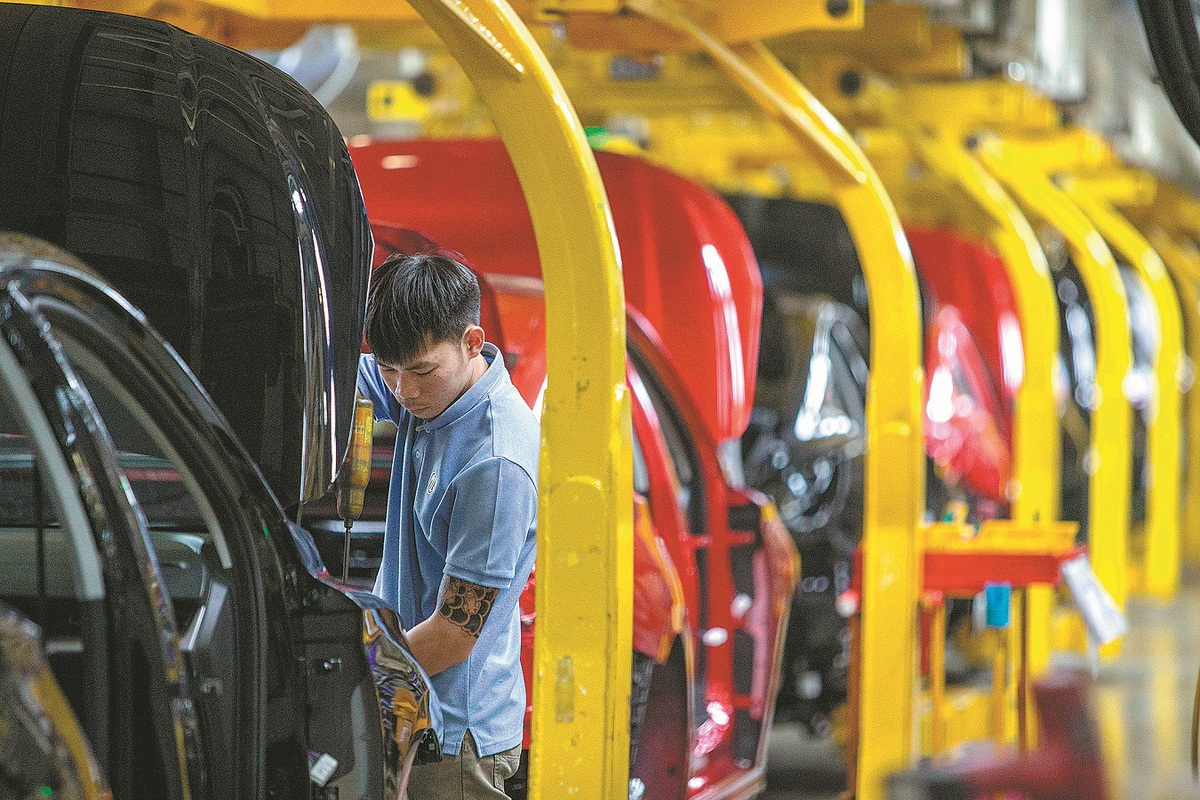
A worker on the production line of the SAIC Motor-CP manufacturing plant in Chonburi, Thailand, on Sept 7. (WANG TENG/XINHUA)
Localization push
Wang, Wuling's deputy general manager, said the company is also working to localize its supply chain. More than 40 percent of the components for its three EV models are produced locally.
The company is working with Indonesia's national electricity utility, Perusahaan Listrik Negara, and other partners to build 1,000 public alternating current charging stations across Indonesia. A total of 100 direct current charging stations are also expected to be completed this year in Indonesia's major cities and along highways.
Indonesia and 14 other Asian countries including India, Thailand, and Japan, along with many former British colonial countries such as Australia and New Zealand, have right-hand drive vehicles that travel on the left side of the road.
"In the future, we will turn Indonesia into a global right-hand drive vehicle base for Wuling and continue to launch competitive products to cover the major right-hand drive markets in Southeast Asia and around the world," said Wang.
In 2023, Wuling manufactured and exported over 1,500 new energy vehicles from Indonesia.
Besides Indonesia, Chinese EV companies have been actively expanding to Southeast Asian markets to increase their local presence.
Leonardus Jegho is a freelance journalist for China Daily.
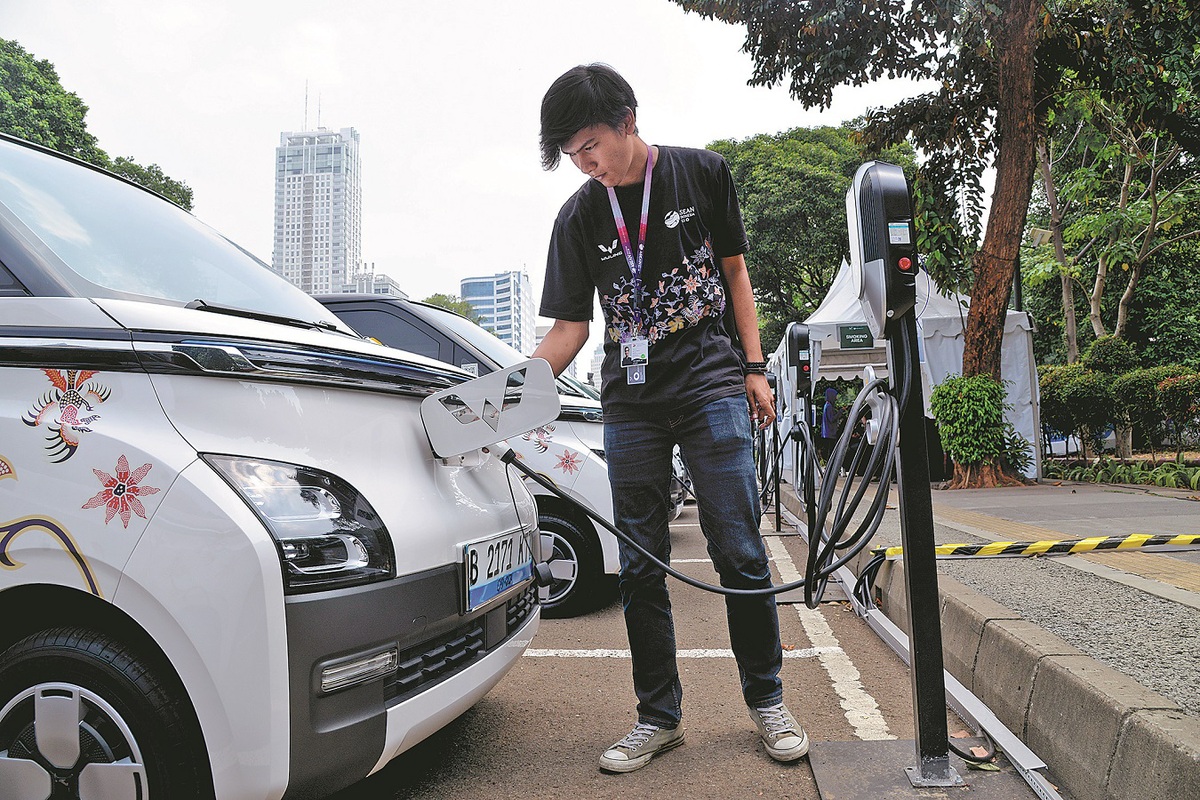
A staff member recharges a Wuling Airev at the service station of the 43rd Association of Southeast Asian Nations (ASEAN) Summit in Jakarta, Indonesia, on Sept 6. (XU QIN/XINHUA)
Photos
Related Stories
- China's booming EV market boosts growth in charging piles
- CPC delegation visits Indonesia
- NEV registrations hit record high, latest sign of robust growth despite foreign suppression
- Uber, BYD announces strategic partnership on EV
- Chinese automaker Chery launches 2 EV models in Thailand
- FM spokesperson's remarks on First Senior Officials' Meeting of China-Indonesia Joint Foreign and Defense Ministerial Dialogue
Copyright © 2024 People's Daily Online. All Rights Reserved.







